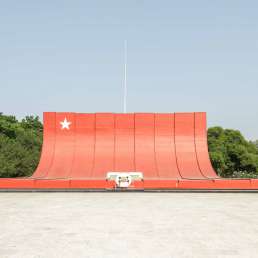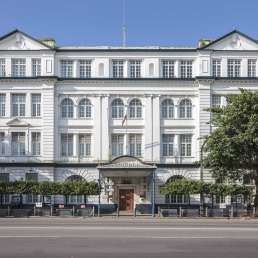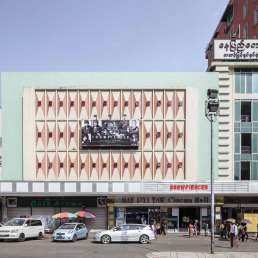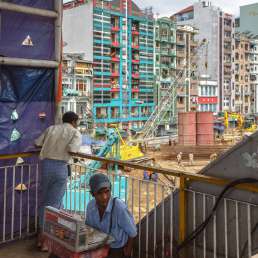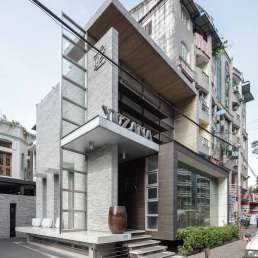Address: Anawratha Road / Bogyoke Road
Year built: 1904-1911
Architect: Henry Hoyne-Fox and Henry Seton-Morris (architects for main building and additional buildings, respectively), Bagchi & Co. (contractors)
Together with the Secretariat, the General Hospital is Henry Hoyne-Fox’s major contribution to Yangon’s cityscape. The hospital replaced a mostly wooden building that was overcrowded and worn-down by the end of the 19th century. Space was made available on the current site by relocating the Agri-Horticultural Gardens and a museum. The main building was complemented by additional wings and tracts over the next few years, such as the administrative block, matron’s accommodation and the morgue. These were designed by Henry Seton-Morris, Consulting Architect to the Government of Burma.
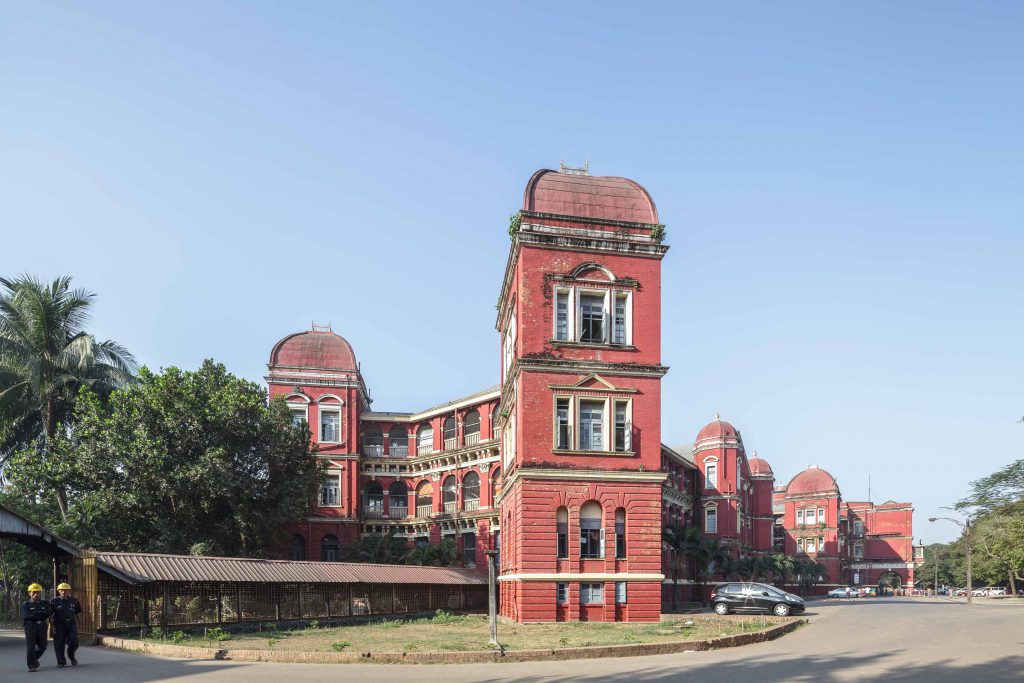
Upon completion, the new hospital was cutting-edge, with its electricity-powered operating theatres and anaesthetics rooms. The floors were made of reinforced concrete, a first for Yangon. The main building is more than 200 metres long and has three stories. Its red bricks and yellow plaster create a unique appearance, visible through the trees from Bogyoke Road. But contemporary John Begg (who built the Custom House, the Central Telegraph Office and the Government Press Building) was not convinced of the hospital’s architectural merits. Sarah Rooney, in her 30 Heritage Buildings, quotes the former Consulting Architect to the Government of India saying:
“Too much ‘design’ has been expended on certain portions of its external appearance. A hospital ward can hardly be too plain and business-like. Nor is the external very pleasing after all. The colour scheme of light red brick and yellow plaster is distinctly unhappy.”
The colonial-era hospital was the front line in the fight against a range of infectious diseases; cholera, typhoid and, above all, malaria were rampant. The General Hospital was also the site of important research into the leprosy bacillus under the head doctor Major Ernst Reinhold Rost, who also happened to be the honorary secretary of the International Buddhist Society.
In 1988, the hospital took on a tragic role in the uprisings. The doctors and nurses did their best to care for the hundreds of injured protestors, many of whom arrived at the hospital with gunshot wounds. The bloodshed was severe and tragically, there wasn’t enough blood for transfusions. Scores died in the corridors. In response, medical staff took to the street just outside the hospital, carrying a banner calling for an end to the violence. In response, soldiers came to the hospital in three trucks and began shooting indiscriminately. As well as injuring six nurses, they killed several civilians including two monks.
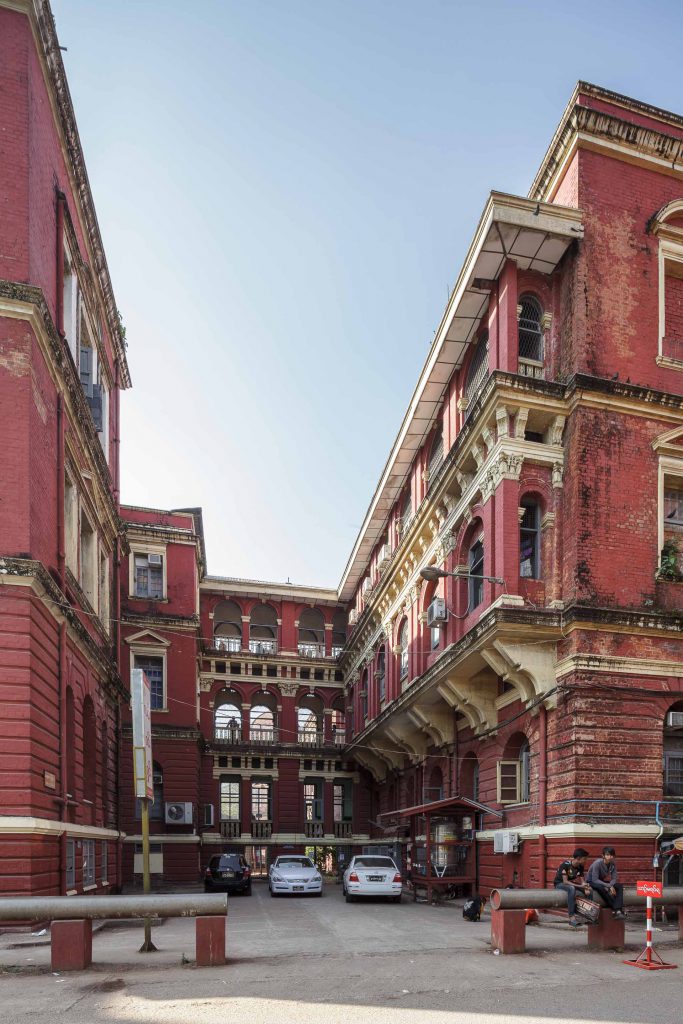
The hospital’s buildings are set back from the street by a driveway and parking lot. People crowd the entrance and two small courtyards formed by the building receding next to the central main entrance. Surrounding the main building are a few lower brick buildings. The open hallways along the building façade are covered with chicken wire. Going towards the back of the building, untamed greenery takes over.
The General Hospital is the largest hospital in Myanmar today. It has 1,500 beds spread across 29 specialities. Approximately 1,800 staff, including 300 doctors and about 500 nurses, look after the patients. It remains the most reputable public hospital in the country and therefore attracts the best clinicians. People travel from across Myanmar, on what can be painful and uncomfortable journeys for the invalid, because they can only receive treatment here. As a result of this, the hospital is seriously overcrowded: admissions doubled between 2008 and 2012, although no major investment in capacity was made. Wards designed for 20 people routinely have to care for 60 or more patients. When beds run out, desperate staff push chairs together or take tables from neighbouring lecture halls to create additional space.
Aung San Suu Kyi and a team from London’s Imperial College have drawn up a plan to modernise General Hospital over the coming years. Yangon needs this urgently.
